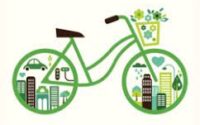Elements of Good Multimedia Storytelling
By Christopher Trilleras
Have you written a story and thought that a video, audio, and/or animation could complement your paper to make it stand out more? Well, many journalists use this technique to create an interactive piece that engages the reader more so than in a story written in a linear format. The combination of text, photographs, video clips, audio interactive graphics that are presented through different mediums and complements each other can be known as multimedia storytelling (Stevens 2020).
The art of conveying a narrative through multiple dimensions of media can be rigorous but also rewarding. Journalists are facing critical challenges in this new age of technology and are expected to adapt to the digital environment which requires one to be skilled in content production of the media forms(López et al. 2017). However, if done correctly, each form of media can contribute to different interests of the reader all at once such as emotion, statistics, drama, interactiveness and much more.

Let’s dissect the website “Is it Hot Out Here?” by Dori Gorczyka and examine what elements constitute it as multimedia reporting(Gorczyka 2015). Once arriving on the website, it is clear that the purpose is to inform the public on the changes in glaciers over time. This is achieved through using several multimedia dimensions. First, the user is introduced to the change in composition over time in the glaciers through old and new photographs that the user can scroll through with the addition of GIS software that depicts the location on a map to visualize the topography better. Both of the forms of media are able to convey the problem by showing the present day impacts of climate change. The website then does a great job at having different tabs with information that help explain climate change effects on glaciers, their importance, future trends, what you can do and additional resources. Multimedia reporting can be found all around the website. It includes pictures with text and data, videos, hyperlinks, and audio recordings that complement the writing.
This article would be considered a great demonstration of multimedia reporting by the topic of focus being elaborated through different tabs that provide both engaging writing and information via forms of media. Although most is scientific (which can be considered jargon to the normal reader) and biased to environmentalists, the article does a good job in explaining the concepts of glaciers with depth and their current state directed by studies and research.
Elements that are missing come directly from the writing style. Journalistic writing must demonstrate independence and contribute to both arguments and counter arguments. As stated before, to the normal reader the scientific writing might be seen as jargon thus this piece is missing the comprehensiveness aspect of journalism.
Incorporating multimedia storytelling can be difficult especially when you are focusing on a scientific topic. It would be best to remember you are writing a narrative that appeals to the rules of journalism while also having some combination of text, still photographs, video clips, audio, graphics and that compliment your writing and interact with the audience.
References:
Stevens, J. (2020). Multimedia storytelling: Learn the secrets from experts. Berkeley Advanced Media Institute.
López-García, X., Rodríguez-Vázquez, A.-I., & Pereira-Fariña, X. (2017). Technological Skills and new professional profiles: Present challenges for journalism. Comunicar, 25(53), 81–90.
Gorczyca, D. (2015). Glacier National Park. Is It Hot Out Here.


